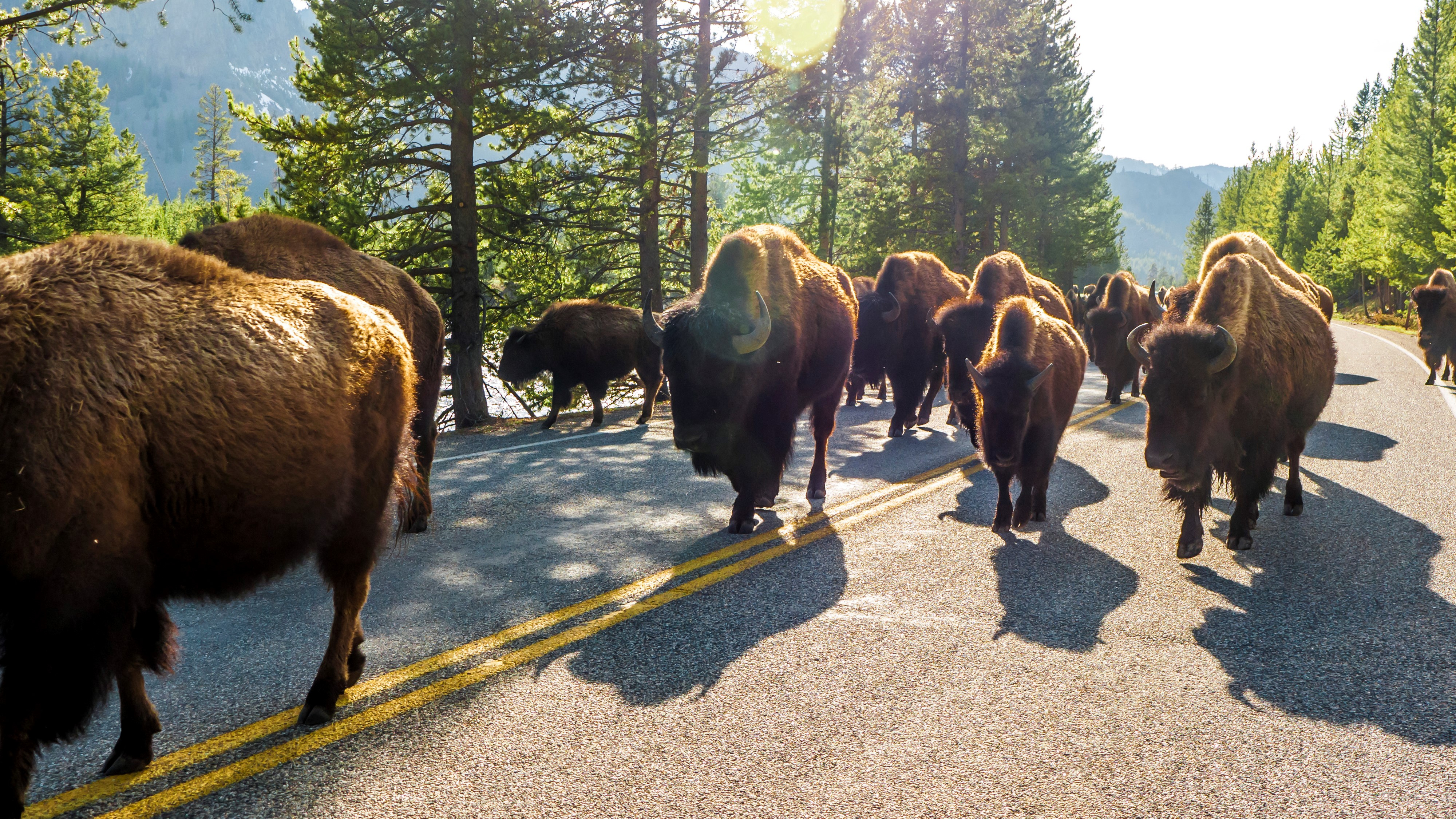iPad-wielding tourist demonstrates how not to photograph bison at Yellowstone National Park
Luckily for the man, a Park Ranger intervened before things took a nasty turn

A man visiting Yellowstone National Park has given a perfect demonstration of how not to photograph the native bison. Upon encountering a herd on the road, rather than staying within the safety of his vehicle as recommended by the National Park Service (NPS), the visitor got out and approached the animals, using his iPad to snap pictures at dangerously close range.
The man continued to draw nearer while other drivers stuck in a growing traffic jam watched in disbelief, and only moved when a Park Ranger intervened and told him to back off. A video of the encounter, shot by photographer Jackie Boesinger Meredyk and shared via infamous Instagram account TouronsOfYellowstone this week, shows just how close the man managed to get to the powerful animals.
"He reaches the herd of bison, who were being nudged forward by park law enforcement, and fearlessly stepped right up to the herd to get his shots," explained Boesinger Meredyk. "Stunned law enforcement officer says, 'You need to get 25 yards away' at which point the man ends his filming and so pleased with himself, returns to his car.”
A post shared by TouronsOfYellowstone (@touronsofyellowstone)
A photo posted by on
Getting up close and personal with the wildlife is one of the biggest mistakes people make when visiting Yellowstone. Although bison and elk may seem docile at first, they are unpredictable and their behavior can change in an instant, particularly if they feel threatened.
The National Park Service (NPS) warns visitors to stay at least 25 yards (23 meters) away from elk and bison at all times, and 100 yards (91 meters) away from wolves and bears. The safest place to watch wildlife is from inside your car (though pierced bodywork and punctured tires are still a risk if you're unlucky).
"Give bison space when they are near a campsite, trail, boardwalk, parking lot, or in a developed area. If need be, turn around and go the other way to avoid interacting with a wild animal in close proximity," says the NPS.
"Approaching bison threatens them, and they may respond by bluff charging, head bobbing, pawing, bellowing, or snorting. These are warning signs that you are too close and that a charge is imminent."
Advnture Newsletter
All the latest inspiration, tips and guides to help you plan your next Advnture!
Bison attacks
Bison, like all wild animals, generally prefer to avoid close contact with people, but females can be particularly aggressive in the spring when defending their calves (also known as 'red dogs' for their ginger-colored fur), and males can be more prone to attack during the rutting season in late summer as they compete for dominance and the right to mate.
Last summer two people were gored by bison at US National Parks within a week, both of whom suffered abdominal injuries. The first victim was charged while walking near the north shore of Lake Yellowstone, while the second was attacked at Painted Canyon Trailhead in Theodore Roosevelt National Park.
"Bison are large, powerful, and wild," said the NPS in a statement at the time. "They can turn quickly and can easily outrun humans. Bulls can be aggressive during the rutting (mating) season, mid-July through August. Use extra caution and give them additional space during this time."
For more advice, see our guides how to avoid being gored by a bison and wildlife safety: eight tips for unexpected encounters.

Cat is Homes Editor at TechRadar and former editor of Advnture. She's been a journalist for 15 years, and cut her teeth on magazines before moving online. She helps readers choose the right tech for their home, get the best deals, and do more with their new devices.
